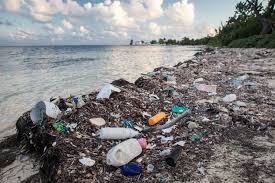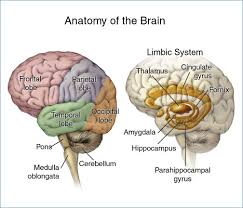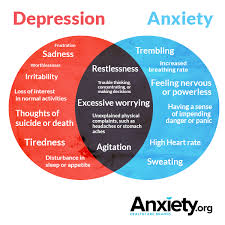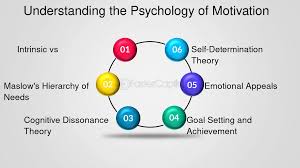Introduction
Plastic has revolutionized the modern world with its versatility, durability, and affordability. However, this miracle material has become one of the greatest threats to our planet’s health, particularly to our oceans. Every year, millions of tons of plastic waste enter marine environments, disrupting ecosystems, endangering marine life, and even affecting human health. As students, it is important to understand the severity of this issue, its causes, and what actions we can take to protect our oceans for future generations.
Understanding Plastic Pollution
Plastic pollution refers to the accumulation of plastic objects and particles (such as plastic bottles, bags, and microplastics) in the Earth’s environment, which negatively impacts wildlife, wildlife habitat, and humans. In the oceans, this pollution is particularly damaging because of the scale at which it occurs and the challenges of cleaning it up.
According to the United Nations Environment Programme (UNEP), approximately 11 million metric tons of plastic enter the ocean each year. If current trends continue, this number could triple by 2040.
Sources of Ocean Plastic Waste
Plastic waste reaches the oceans from multiple sources:
- Land-based activities: This is the largest source, including littering, improper waste disposal, and runoff from rivers.
- Marine activities: Fishing gear, shipping, and offshore oil platforms contribute significantly to ocean plastics.
- Stormwater runoff: Plastics discarded on land are often carried into waterways and oceans through rain and storm drainage systems.
The majority of plastics that enter the oceans are single-use products like bags, bottles, and packaging, highlighting the urgent need for better waste management and reduced plastic consumption.
The Journey of Plastic in the Oceans
Once plastic waste enters the oceans, it can follow various paths:
- Floating on the surface: Plastics, particularly lightweight types, can float and travel great distances across ocean currents, often accumulating in massive patches such as the Great Pacific Garbage Patch.
- Breaking into microplastics: Exposure to sunlight, waves, and mechanical forces breaks plastics down into tiny particles called microplastics (less than 5 mm in size).
- Sinking to the ocean floor: Heavier plastics, or those that collect organic matter, can sink and accumulate on the seafloor, where they may persist for hundreds of years.
This widespread distribution makes plastic pollution an almost invisible but pervasive threat.
Impact on Marine Life
The presence of plastic in the oceans has devastating consequences for marine ecosystems.
Ingestion
Many marine animals mistake plastic items for food. Sea turtles often consume plastic bags, thinking they are jellyfish. Birds, like albatrosses, feed plastic to their chicks. Once ingested, plastics can cause:
- Internal injuries: Sharp pieces can puncture organs.
- Blockages: Plastics can clog the digestive tract, leading to starvation.
- Toxicity: Plastics can absorb harmful pollutants from the water, which then enter the food chain when animals consume them.
A heartbreaking study found that 90% of seabirds have plastic in their stomachs, and this figure is expected to rise to 99% by 2050.
Entanglement
Plastic waste such as discarded fishing nets, six-pack rings, and packaging straps can entangle marine animals. This can cause:
- Injuries: Cuts, infections, and restricted movement.
- Drowning: Animals like seals and turtles can drown if entangled and unable to surface for air.
- Reduced mobility: Entanglement can make it difficult for animals to hunt, escape predators, or reproduce.
Habitat Disruption
Plastic pollution also disrupts marine habitats:
- Coral reefs: Plastic debris can smother corals, block sunlight, and introduce diseases, causing coral reefs to decline.
- Beaches and coastal areas: Accumulated plastics on beaches can affect nesting sites for animals like turtles and birds.
Impact on Human Health
While the visible effects on marine life are distressing, plastic pollution also poses serious risks to human health.
Seafood Contamination
As microplastics enter the food chain, they accumulate in fish and shellfish consumed by humans. The long-term health impacts are still being studied, but potential concerns include:
- Chemical exposure: Plastics can carry toxic chemicals such as pesticides, heavy metals, and persistent organic pollutants (POPs).
- Cellular damage: Early research suggests that microplastics may cause inflammation and cellular damage when ingested.
Economic Costs
Plastic pollution impacts industries that depend on healthy oceans:
- Tourism: Littered beaches are less attractive to visitors, affecting local economies.
- Fishing: Damaged ecosystems and contaminated seafood can reduce fish stocks and affect livelihoods.
- Shipping: Plastic debris can damage vessels and infrastructure, leading to costly repairs.
Globally, ocean plastic pollution is estimated to cost the world economy up to $13 billion USD annually.
Major Plastic Garbage Patches
One of the most alarming signs of oceanic plastic pollution is the formation of massive garbage patches. The most famous is the Great Pacific Garbage Patch, located between Hawaii and California. It is estimated to be twice the size of Texas and composed mostly of microplastics dispersed over a large area.
Other significant patches exist in the Atlantic and Indian Oceans, created by the convergence of ocean currents known as gyres.
These patches are not solid islands of trash but rather vast areas where plastic pieces are densely concentrated, posing huge risks to marine life.
Solutions to Ocean Plastic Pollution
Solving the ocean plastic crisis requires a multi-faceted approach involving individuals, industries, and governments.
Reducing Plastic Use
- Avoid single-use plastics: Switch to reusable bags, bottles, and containers.
- Support sustainable alternatives: Choose products made from biodegradable materials.
- Advocate for change: Support policies that reduce plastic production and improve waste management.
Improved Waste Management
- Enhanced recycling: Increase recycling rates and improve recycling technologies.
- Proper disposal: Encourage correct disposal of plastics to prevent them from reaching waterways.
- Waste-to-energy initiatives: Some communities are converting waste into energy to reduce landfill dependence.
Cleanup Initiatives
Several global and local efforts aim to clean up existing plastic pollution:
- The Ocean Cleanup: This organization is developing advanced technologies to remove plastic from the oceans and intercept it in rivers before it reaches the sea.
- Beach cleanups: Community-driven cleanups help to remove plastics from shorelines and raise awareness about the issue.
- Fishing for Litter: Programs where fishers collect plastic waste while fishing.
Education and Awareness
Educating the public, especially students, about the impact of plastic waste can lead to behavior changes that collectively make a significant difference. Campaigns, school programs, and social media movements have been powerful tools in spreading awareness.
Policy and Legislation
Government actions are crucial:
- Plastic bans: Many countries have banned or taxed single-use plastics.
- Extended producer responsibility (EPR): Companies are made responsible for the entire lifecycle of their plastic products.
- International agreements: Efforts like the Global Plastics Treaty aim to tackle plastic pollution on a worldwide scale.
Innovations and Hope
Innovation gives hope for a cleaner future. Scientists and inventors are developing:
- Biodegradable plastics: Made from natural materials like corn starch or algae.
- Plastic-eating bacteria: Certain microbes have been discovered that can break down plastics.
- Alternative packaging: Edible packaging and materials like seaweed-based wrappers are entering the market.
While no single solution exists, a combination of efforts can significantly reduce the amount of plastic entering our oceans.
What You Can Do
As students and future leaders, you can make a real difference:
- Be conscious consumers: Think about the products you buy and their environmental impact.
- Participate in cleanups: Join local efforts to clean beaches and rivers.
- Spread the word: Educate your friends and family about plastic pollution.
- Innovate: Use your creativity to develop new solutions for reducing or reusing plastics.
Every action counts!
Conclusion
The impact of plastic waste on our oceans is vast and devastating, but it is not irreversible. With awareness, innovation, and collective action, we can turn the tide against plastic pollution. The oceans are a vital part of our planet’s health — they produce more than half of the world’s oxygen, regulate our climate, and provide food and livelihoods for billions of people. Protecting them is not just an environmental issue; it is essential for the future of humanity itself.
At Study Rhino, we believe in empowering young minds with knowledge. Understanding the challenges of plastic waste is the first step toward creating a sustainable and thriving world. Let’s work together to ensure that our oceans remain beautiful, bountiful, and free from plastic waste.




